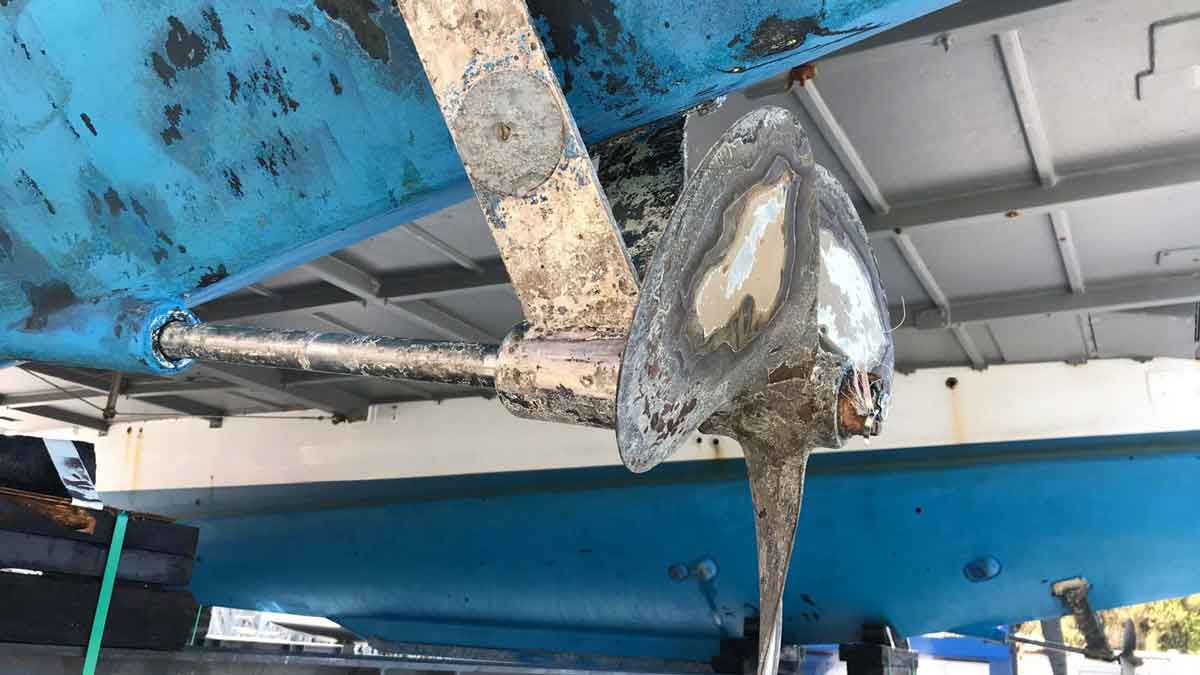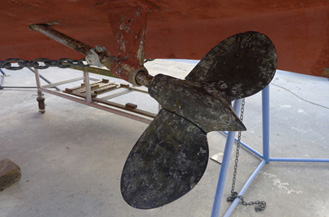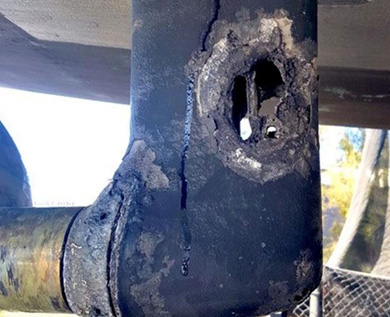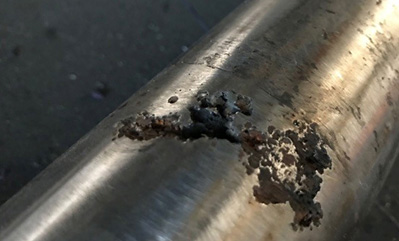What Are the Common Types of Corrosion?
- Propspeed
- Other
Summary
Corrosion on vessels has always plagued the maritime industry. Increased electrification on modern vessels over the years have made understanding how to mitigate the impacts of corrosion a necessity. In order to do this, we must start by understanding what corrosion is and how it is caused.

About
How is corrosion caused?
Underwater corrosion is a result of the movement of ions from a solid (like your propeller) to a liquid solution (like the ocean). Four components are needed for “wet cell corrosion”;
1. An Anode (or positivity charged part)
2. A “Cathode” (or negatively charged part)
3. An electrode or electrically conducting solution
4. And a connection between them
Removing one of them breaks the “cell” and corrosion cannot continue.
How can Propspeed protect my vessel against corrosion?
By using coating systems combined with good cathodic protection you can isolate or reduce any one of these four “cell” essential components in each of the types of corrosion. Coatings like Propseed can greatly reduce the risk of corrosion on your vessel’s underwater metals.
What are the 3 main types of corrosion?
1. Galvanic
2. Electrolytic
3. Atrolytic (or crevice corrosion)
Galvanic corrosion is the result of having dissimilar metals in contact with the same electrolyte. Certain metals are more stable than others, and the less stable metals in a system will corrode (lose some of its ions), protecting the more stable metals. This is the principle behind your traditional anode system whereby a “‘sacrificial’ anode of zinc, aluminum, or magnesium will be bonded to a more stable material (like your stainless shafts) to allow the cheap, replaceable anode to corrode and save the expensive stainless shaft.
How can Propspeed help? While the anode is an essential part of this system, we can go a step further in preventing corrosion by adding a protective coating. Coatings can isolate the metal, significantly reducing the conductivity of the component. Silicone foul-release coatings such as Propspeed prevent growth from being able to adhere to a surface, in addition these coatings do not contain any conductive material and therefore act as a superior insulator. In short, insulating a metal underwater from either the water itself or the surrounding metals will greatly reduce the rate of corrosion.
Example 1: Galvanic Corrosion
A bronze strut, holding a stainless steel shaft connected to connected to a NiBrAl propeller.

Electrolytic corrosion occurs when stray currents, either from a marina, another vessel, or poorly bonded systems on the vessel itself induces a current into the water. The best thing to do is to remove the source of the stay current however this is not always possible. Instead we can add sacrificial anodes to bonded metal surfaces. However, this will only partially solve the problem as once an anode is degraded, the corrosion will begin to attack a more stable metal. Therefore, we still need to isolate one of the metal components in order to break the galvanic cycle. Just like in the example of galvanic corrosion, we need to reduce the electrical potential of the surface we want to protect.
How can Propspeed help? Traditional antifouling can achieve this to a degree, but they are typically still conductive enough for there to be a voltage difference. Propspeed is a vastly superior insulator to traditional paint systems and is effective in isolating the component from the electrolyte. Electrolysis can be severe, so choosing a good cathodic protection system along with coatings that compliment it can go a long way towards eliminating the problem.
Example 2: Electrolytic corrosion of a saildrive.

Atrolytic corrosion occurs, in a small, tight areas such as the threads of a screw fitting or shaft seal where a small amount of water is trapped between two metal surfaces. In these cases, coatings can often be the only barrier to the corrosion occurring, however, it is not always practical to coat close mating surfaces. Manufacturing processes like anodizing, where a very thin layer of aluminum oxide, which is non-conductive is bonded to aluminum surfaces can serves the purpose of breaking the circuit and isolating the metal surfaces.
How can Propspeed help? Coatings like Propspeed are a good preventative measure in keeping crevice corrosion at bay, but due to the close contact of mating surfaces, it’s always a good idea to closely inspect any trouble areas.
Example 3. Atrolytic corrosion of a stainless steel shaft

Visit Marine Protection Systems, the corrosion experts, to learn more about corrosion and correct anode selection to ensure the best efficiencies and performance for your vessel.